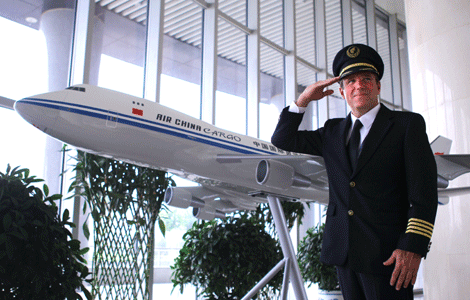Thawing out
Updated: 2011-05-20 11:36
By Zhong Nan (China Daily European Weekly)
|
|
After a deep freeze in sales during the recession, China’s air conditioner makers are bouncing back
It is the busiest season for Gree Electric Appliances, China's largest maker of air conditioners. The temperature has reached 32 C in Zhuhai, the southern coastal city where Gree is headquartered. In Gree's 800,000-square-meter factory complex, workers in navy blue uniforms brave the summer heat to pack approximately 2,000 air conditioners in a storage bungalow, while 10 trucks are lined up to take the air conditioners to a port 10 kilometers away.
But these air conditioners are not going to be sold in China. Instead, they will arrive in Hamburg, Germany, in 25 days, one of several examples that the global demand for Chinese air conditioners is rebounding.
China, which makes the highest total number of air conditioners of any nation, saw its air conditioner industry suffer during the recent recession. Exports of air conditioners dropped 25.6 percent year-on-year to 23.75 million units in 2009.
But since the government approved a home appliance subsidy program in 2009, rural spending on air conditioners has grown. Chinese air conditioner makers are also facing an easier time, industry experts claim, and global demand for the appliances rallied last year.
"Chinese enterprises to a certain extent took advantage of (the recession) by speeding up research and development and overseas expansion," says Li Jinlin, dean of the School of Management and Economics at Beijing Institute of Technology.
|
 |
What Chinese air conditioner makers did wasn't rocket science. They first expanded their marketing reach across the nation and then improved after-sales services, emphasized their respective brands and grew their research and development departments in order to expand overseas.
Last year, China produced a total of 112 million air conditioners. Exports grew by 55.8 percent from a year earlier to 36.99 million units. China's three largest air conditioner brands - Haier, Gree and Midea - accounted for 87 percent of China's total air conditioner exports last year, according to the China Household Electrical Appliances Association.
Su Ming, director of marketing for air conditioners at Haier, says: "The global credit crunch showed us that labor-intensive and original equipment manufacturer enterprises don't have much chance to survive during the recession because they don't have any technological advantages and they thought the market demand would be there forever. In contrast, we rely on research and development to expand the European Union (EU) market and our air conditioning products also gained the qualification of using the ETL-EU mark."
The mark is a safety certification distinction used across the EU.
"Haier has 28 research and development centers around the world but the EU has always been our focus because it has strong purchasing power. We have air conditioner innovation centers in Lyon, France; and Amsterdam, the Netherlands, and we employ European designers to enhance our competitive power," Su says.
The Qingdao-based company has 10 factories in Europe, the United States, Asia, the Middle East and Africa. It sells air conditioners in more than 110 countries and regions.
Last year, sales of Haier air conditioners increased by 31.2 percent to 11.4 billion yuan (1.24 billion euros) from 2009. Ten percent of Haier's air conditioners were exported to the EU last year. The United Kingdom, Germany, France, Spain, Italy and Greece are the company's main targets in the EU.
E-paper

Pearl paradise
Dreams of a 'crazy' man turned out to be a real pearler for city
Literary beacon
Venice of china
Up to the mark
Specials

Power of profit
Western companies can learn from management practices of firms in emerging economies

Foreign-friendly skies
About a year ago, 48-year-old Roy Weinberg gave up his job with US Airways, moved to Shanghai and became a captain for China's Spring Airlines.

Plows, tough guys and real men
在这个时代,怎样才"够男人"? On the character "Man"

